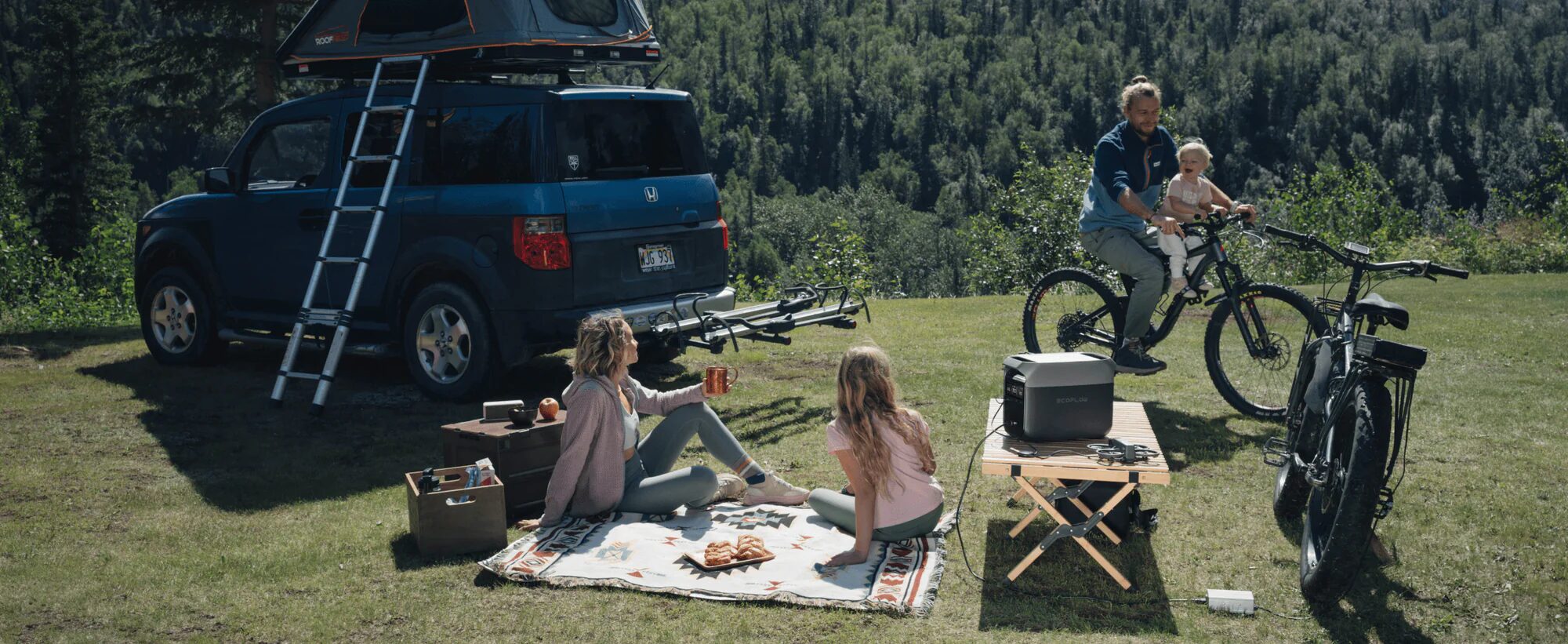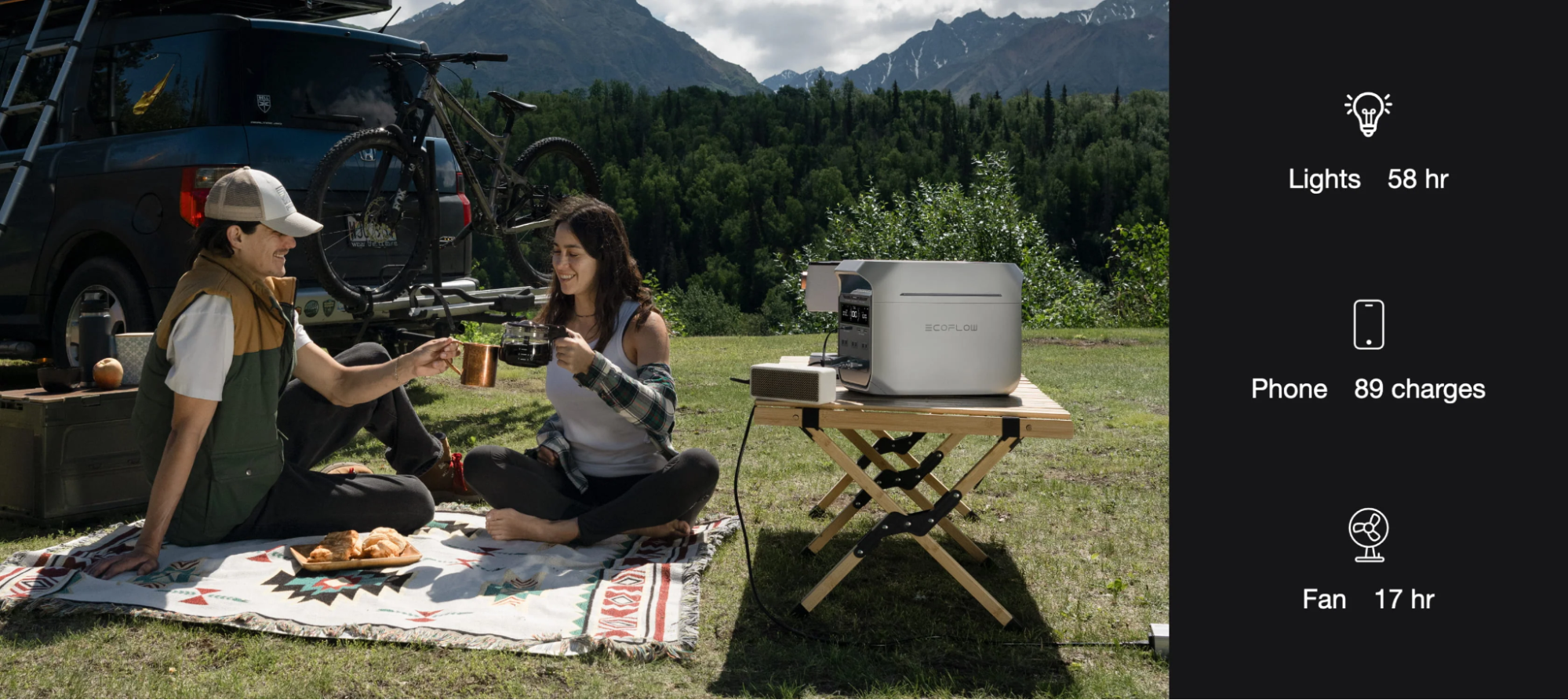In Canada, electricity is more than a convenience—it’s essential for survival. Heating systems, food storage, communication devices, and even access to clean water in some regions all depend on a steady flow of power. Yet, across the country, power outages are becoming increasingly common. Severe winter storms, ice buildup on power lines, forest fires in the summer, and heavy rainfalls can leave neighborhoods without electricity for hours or even days.
These outages are more than just inconveniences. For families in suburban homes, rural cottages, or remote towns, the loss of electricity means loss of warmth, spoiled food, and disrupted communication. As a result, more Canadians are searching for reliable backup energy solutions. Among the emerging options, the portable power station is quickly becoming a household essential.
What Is a Portable Power Station?
A portable power station is essentially a high-capacity rechargeable battery combined with inverter technology that can deliver electricity to a wide range of devices. Unlike traditional gas generators, these units run silently, produce no emissions, and can be recharged in multiple ways—including through wall outlets, car chargers, and increasingly, solar panels.
Modern portable power stations are designed for versatility. They provide both AC and DC outputs, meaning you can plug in household appliances, laptops, smartphones, lights, or even medical devices. Many models use advanced lithium iron phosphate (LiFePO4) batteries, which are known for their long life cycles and durability in challenging environments.
What makes these stations particularly attractive to Canadians is their ability to adapt to different needs—whether it’s preparing for an unexpected winter blackout, enjoying a summer camping trip, or powering a remote home office.
Blackouts and Home Preparedness in Canada
Canada’s climate is harsh, and extreme weather events are part of life. Winter storms in Ontario and Quebec have left thousands of households without power for days. In British Columbia, forest fires have forced entire communities off-grid. Even in major cities like Toronto, sudden outages during heatwaves have reminded residents just how dependent modern life is on uninterrupted electricity.
In these situations, a portable power station provides peace of mind. Families can keep essential devices running, such as:
- Heating equipment: portable heaters or electric blankets during winter outages.
- Lighting: keeping rooms illuminated at night without relying on candles or kerosene lamps.
- Food preservation: refrigerators and freezers can continue operating to avoid spoilage.
- Communication: phones, radios, and Wi-Fi routers remain powered for emergency updates.
- Medical devices: for households with health equipment like CPAP machines, uninterrupted power is vital.
Unlike noisy gas generators, portable power stations can be safely used indoors, making them especially practical for urban and suburban households. This combination of safety, reliability, and ease of use has made them one of the fastest-growing backup solutions in Canadian homes.
Outdoor Adventures and Camping Culture
Canada is famous for its outdoor lifestyle. With vast national parks, countless lakes, and a strong culture of camping and “cottage life,” spending time in nature is a tradition for millions of Canadians. Whether it’s a summer weekend at Algonquin Park in Ontario, fishing trips in Manitoba, or road trips through the Rockies, many families and adventurers look for ways to enjoy the outdoors without giving up modern conveniences.
A portable power station has become a game-changer for these experiences. It allows campers to bring along electric lighting, keep food chilled in portable coolers, and charge cameras, drones, or smartphones to capture memories. For families with young children, it means running small fans or heaters in tents or trailers, making camping more comfortable and safe.
RV travelers also benefit greatly. With the ability to power laptops, TVs, or even small kitchen appliances, portable power stations make road trips feel more like home. Unlike gas generators, they are quiet, which helps preserve the peaceful atmosphere of Canada’s wilderness while avoiding complaints at campgrounds where noise restrictions are common.
Remote Work and Life in Rural Areas
Another reason Canadians are embracing portable power stations is the growing trend of remote work and the reality of rural living. Many people live outside major cities, where power interruptions are more frequent and the electrical grid may not be as reliable. Others are embracing mobile lifestyles—working from RVs, cabins, or cottages.
For these households, staying connected is essential. A portable power station ensures that laptops, Wi-Fi routers, and phones remain operational during outages or when working in locations without stable grid access. Some models are even designed to function as an uninterruptible power supply (UPS), automatically switching on when the main grid goes down, preventing data loss during work.
This flexibility gives Canadians the freedom to work where they want—whether from a lakeside cottage, a forest retreat, or a small town far from urban centers—without worrying about being disconnected.
Portable Power Station vs. Gas Generators
For decades, gas-powered generators were the default backup solution. But in Canada, where environmental awareness and sustainability are increasingly valued, portable power stations are proving to be the smarter alternative.
1. Noise
Gas generators are notoriously loud, often disturbing neighbors or ruining the peace of a campsite. Portable power stations, by contrast, operate almost silently, making them far more user-friendly in both urban and outdoor settings.
2. Safety and Environment
Generators emit toxic fumes like carbon monoxide, which makes them unsafe for indoor use. Portable power stations are emission-free and safe to operate indoors, whether in an apartment, a suburban home, or a tent. This aligns with Canada’s environmental policies and citizens’ growing commitment to reducing carbon footprints.
3. Cost and Maintenance
Gas generators require constant refueling, oil changes, and maintenance to stay functional. Portable power stations have minimal maintenance requirements. While the upfront cost can be higher, the long-term savings on fuel and servicing make them an attractive investment.
4. Regulations and Restrictions
Some campgrounds and municipalities restrict or ban the use of noisy or polluting gas generators. Portable power stations face no such limitations, giving users more freedom to power their devices without conflict.
For many Canadians, these factors are tipping the scales toward portable power stations as the better choice for both everyday reliability and outdoor use.
How to Choose the Right Portable Power Station in Canada
As interest grows, Canadians have more choices than ever. However, not all portable power stations are created equal, and selecting the right one depends on individual needs. Here are some key factors to consider:
Capacity (Wh) and Power Output (W)
Small models (200–500 Wh) are ideal for phones, laptops, and lights during short camping trips.
Medium units (1,000–2,000 Wh) can power appliances like refrigerators, coffee machines, or CPAP machines.
Large systems (3,000+ Wh) are best for whole-home backup or extended off-grid living.
Battery Technology and Cold Resistance
Lithium iron phosphate (LiFePO4) batteries are preferred for Canadian climates. They last longer and tolerate cold temperatures better than older battery types.
Expandability
Some systems allow you to add extra batteries, making them suitable for both small outings and full-home emergency setups. This is especially useful in rural Canada, where outages can last days.
Charging Options
Look for models that support fast charging from wall outlets, as well as car chargers and solar panels. Solar compatibility is particularly important for eco-conscious Canadians who want renewable energy independence.
Portability and Weight
For camping or van life, portability is key. Compact designs with handles or wheels make transport easier.
Variety of Ports
Ensure the unit has enough AC outlets, USB ports, and DC inputs to meet your household or travel needs.
By evaluating these criteria, Canadians can find a portable power station that truly fits their lifestyle—whether it’s for a Toronto condo, a Vancouver RV trip, or a Quebec cottage in the woods.
Future Trends and Growing Popularity in Canada
The popularity of portable power stations is not a passing trend—it’s part of a larger shift in how Canadians think about energy. Three trends stand out:
- Integration with Renewable Energy: More models are designed to pair with solar panels, enabling clean and sustainable off-grid living. For eco-conscious Canadians, this makes portable power stations a natural fit.
- Advancements in Battery Technology: Newer lithium technologies are improving cold-weather performance and lifespan, making these devices more reliable in Canada’s extreme climate.
- Rising Demand: As blackouts become more frequent and outdoor lifestyles more common, portable power stations are being seen not just as luxury gadgets but as essential home appliances. Retailers are expanding their selections, and adoption rates are steadily climbing.
Conclusion: Why More Canadians Are Turning to Portable Power Stations
In Canada, portable power stations are increasingly becoming a household essential. For many Canadians, investing in one not only ensures reliable electricity during power outages but also provides dependable support for outdoor travel and remote work. It helps users overcome the challenges of blackouts and embrace a freer, more convenient, and eco-friendly lifestyle.
In this field, EcoFlow is known for its innovation and reliability, making it the trusted choice for Canadian families and outdoor enthusiasts.





































